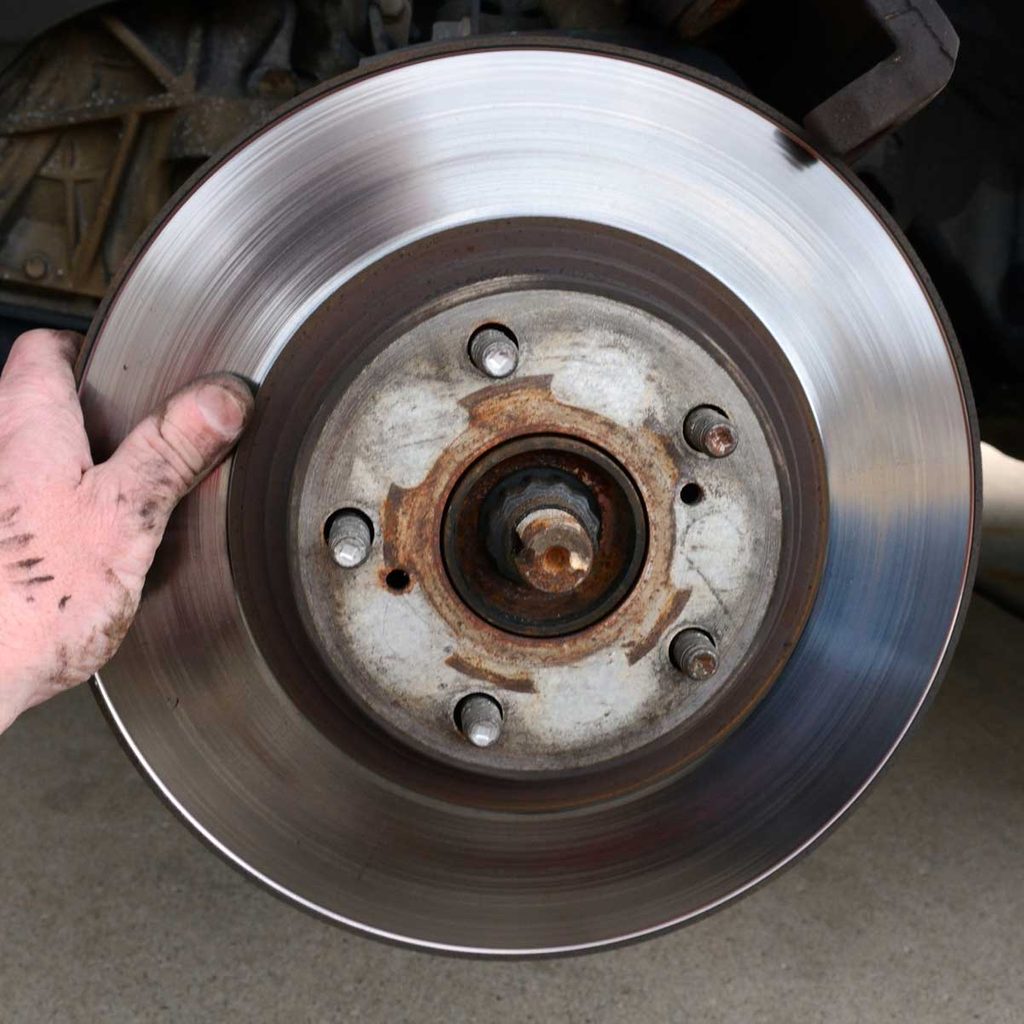How Long Do Brake Rotors Last?
Updated: Jan. 15, 2024

Brakes are one of the most important systems in your car and take a lot of abuse. Certain parts will wear out and occasionally need replacing.
Brakes are one area where vehicle owners simply cannot compromise. Disc brake rotors, or discs, normally wear out because they generate heat to stop your car. Signs such as excess dust on the wheels, excessive stopping distance, or strange noises and vibrations when braking can indicate rotor warping, cracking, glazing or scoring. Consider replacing them when these symptoms occur.
On This Page
What Are Brake Rotors?
Brake rotors are circular, two-sided machined discs mechanically connected to the wheels. They’re designed to turn motion (kinetic energy) into thermal energy (heat) as friction. Over time rotors wear because of friction, disc pad wear-and-tear, and things like mud and road salt that cause rust.
How Do Brake Rotors Work?
As the brake calipers squeeze and clamp the brake pads down on the disc rotors, the rotor surface area generates friction. Heat friction makes the car come to a stop by slowing the rotor (and wheel) rotation and ultimately the car.
Rotors help absorb heat created during braking, and dissipate it while driving, but heat is the main reason rotors wear and warp. Glazing occurs when rotors are overheated to the point that the metal hardens to a smooth shiny finish and can no longer create friction when the brake pads clamp around the rotor.
How Long Do Brake Rotors Last?
Under normal driving conditions, rotors should last 30,000 to 70,000 miles or longer. But rotor type or design, along with city or aggressive driving (where brakes are applied harder and more often, generating excessive heat), cause rotors to wear differently.
The type of vehicle, driving with two feet (with the left foot barely resting on the brake pedal) or even the type of environment where you live (salt air and road salt cause rotors to corrode) all affect a rotor’s life span.
In addition, mechanical problems such as binding brake calipers, a bad wheel bearing, or semi-metallic pads that may have been installed at some point, can cause excess rotor wear. And although often ignored, uneven or over-tightening lug nuts with an impact wrench can also warp rotors.
Should You Resurface or Replace Your Rotors?
Rotors can only be resurfaced if the friction surface has no cracks or extreme warping, rust, scoring or grooves. Never machine a rotor past the manufacturer’s minimum thickness refinish specs. Rotors machined past minimum thickness cannot disperse heat, increasing stopping distance, as well as risking disc failure due to cracking.
To save weight, many modern cars come with thinner rotors, with minimal surplus surface material for machining. In these cases, replacing both front (or rear) rotors helps eliminate brake pulling. When replacing rotors, be sure the rotor and wheel bearing mating surfaces are cleaned of any dirt or rust buildup to prevent warping or vibration.
Brake Rotor Maintenance
DIY rotor maintenance involves inspecting both sides of rotors for cracks, rust and scoring. Remove surface rust using a drill with a wire brush or abrasive wheel, then clean the friction surface with non-chlorinated spray brake cleaner. Get to know about DOT 4 brake fluid.
